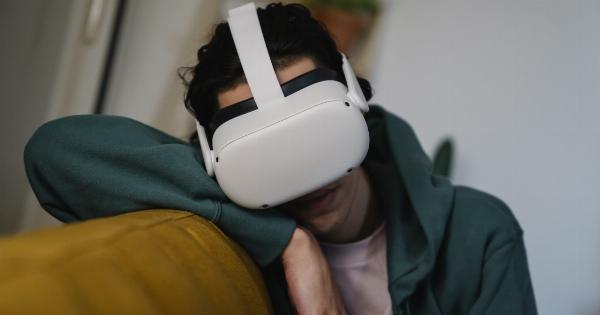Myopia and astigmatism are common refractive errors that affect millions of people worldwide. Traditionally, laser-based procedures like LASIK have been used to correct these conditions.
However, recent advances in medical technology have paved the way for new and innovative methods of correcting myopia and astigmatism. In this article, we will explore these breakthroughs and discuss how they are revolutionizing the field of vision correction.
The Limitations of Laser-Based Correction
Laser vision correction procedures like LASIK have been popular for many years due to their effectiveness in improving vision. However, they do come with certain limitations.
LASIK involves reshaping the cornea using a laser, which can be a complex and delicate process. While LASIK has a high success rate, there is still a small risk of complications such as dry eyes, halos, and fluctuating vision.
Additionally, some patients may not be good candidates for LASIK due to factors like thin corneas or high degrees of refractive error.
Implantable Collamer Lenses (ICL)
One exciting alternative to LASIK is the use of implantable collamer lenses (ICL). These lenses are surgically inserted into the eye and function similarly to contact lenses.
However, unlike traditional contact lenses, ICLs are positioned inside the eye rather than on the surface of the cornea. This positioning provides a more stable and permanent vision correction solution. ICLs are particularly beneficial for patients with high myopia or thin corneas who may not be suitable candidates for LASIK.
Refractive Lens Exchange (RLE)
Refractive lens exchange, also known as lens replacement surgery, is another promising option for myopia and astigmatism correction.
This procedure involves removing the natural lens of the eye and replacing it with an artificial intraocular lens (IOL) that corrects the refractive error. RLE is similar to cataract surgery, but instead of removing a cloudy lens, a clear lens is replaced.
RLE is particularly well-suited for patients with presbyopia, a condition that affects near vision with age, as it enables both myopia and presbyopia correction.
Corneal Inlays
Another innovative solution for myopia correction is the use of corneal inlays. These small devices are planted into the cornea to change its shape and correct the refractive error.
Corneal inlays work by adjusting the way light enters the eye, helping to focus it correctly on the retina. This procedure is minimally invasive and reversible, making it an attractive option for patients seeking myopia correction. Corneal inlays can also be combined with other procedures like LASIK to achieve optimal results.
Orthokeratology (Ortho-K)
Orthokeratology, commonly known as Ortho-K, is a non-surgical method of myopia and astigmatism correction. This technique involves wearing specially designed rigid contact lenses while sleeping.
These lenses temporarily reshape the cornea, providing clear vision during the day without the need for glasses or contacts. Ortho-K is particularly popular among children and teenagers who may not be suitable candidates for surgery. It offers a reversible and non-invasive option for managing myopia progression.
Combining Techniques for Enhanced Results
In some cases, combining different techniques can lead to even better results in myopia and astigmatism correction. For example, a patient may undergo LASIK to correct their astigmatism and then have an ICL implanted to address their high myopia.
By customizing the treatment plan to the individual’s unique needs, ophthalmologists can achieve optimal visual outcomes.
Enhancing Safety and Precision
Advancements in technology have not only led to new treatment options but have also improved the safety and precision of myopia and astigmatism correction procedures.
Modern diagnostic tools such as corneal topography and wavefront analysis allow for highly accurate measurements of the cornea and assessment of irregularities. Additionally, femtosecond lasers are now used for creating corneal flaps in LASIK, enhancing the predictability and safety of the procedure.
Risks and Considerations
While these new advancements offer exciting possibilities, it is important to understand that all surgical procedures carry some risks. Potential complications include infection, dry eyes, glare, and halos.
It is crucial for patients to consult with experienced ophthalmologists, undergo comprehensive eye examinations, and discuss their individual circumstances and expectations before deciding on a treatment method.
Conclusion
The landscape of myopia and astigmatism correction is continuously evolving, with new advanced techniques emerging as viable alternatives to traditional laser-based procedures.
Implantable collamer lenses, refractive lens exchange, corneal inlays, and orthokeratology are all transforming the way these refractive errors are treated. By combining different techniques and leveraging technological advancements, ophthalmologists can provide patients with safer, more precise, and highly customized vision correction solutions.



























